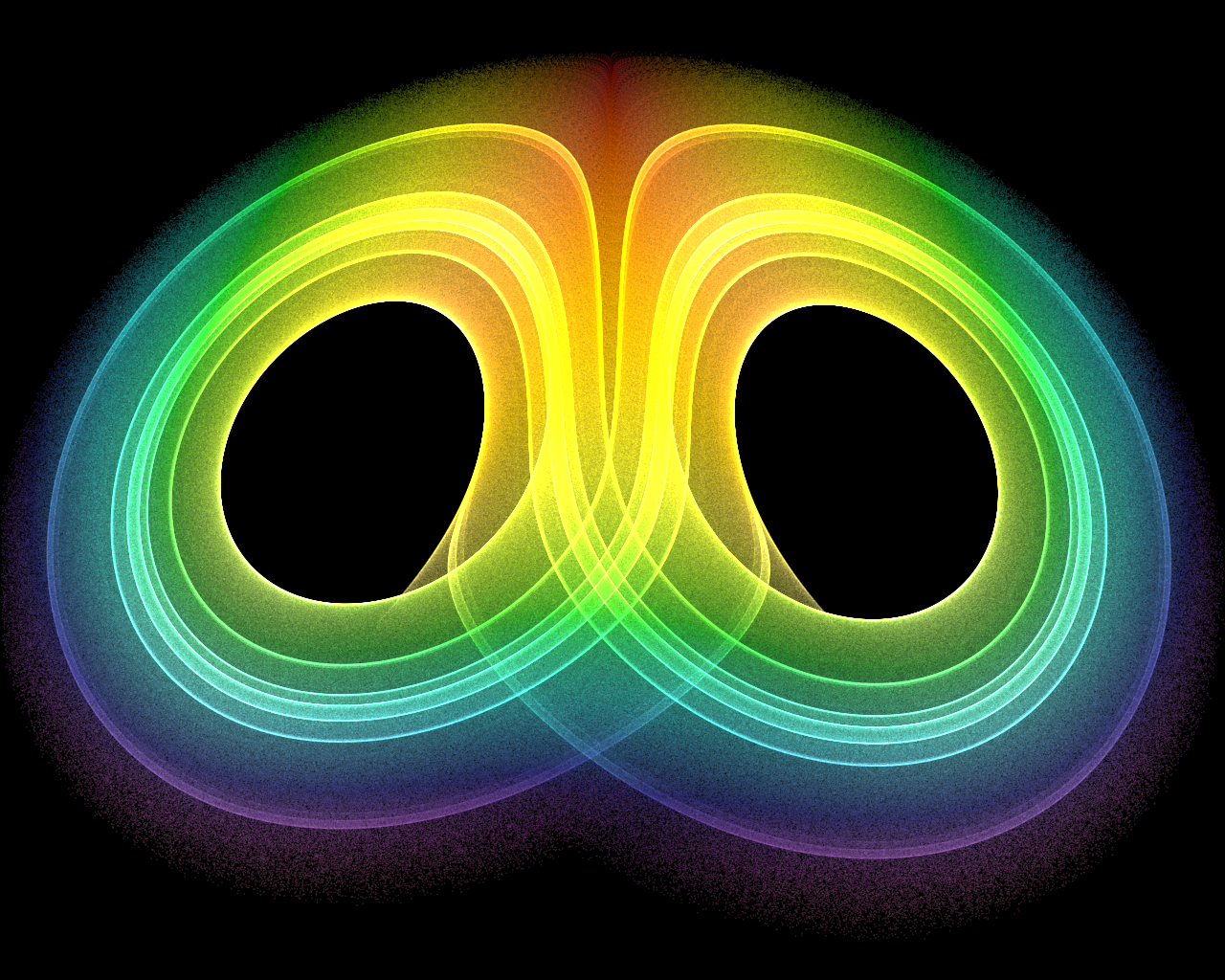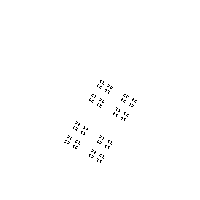The Butterfly Effect
 Weather prediction is an extremely difficult problem. Meteorologists
can predict the weather for short periods of time, a couple days
at most, but beyond that predictions are generally poor.
Weather prediction is an extremely difficult problem. Meteorologists
can predict the weather for short periods of time, a couple days
at most, but beyond that predictions are generally poor.
Edward Lorenz was a mathematician and meteorologist at the Massachusetts Institute of Technology who loved the study of weather. With the advent of computers, Lorenz saw the chance to combine mathematics and meteorology.
He set out to construct a mathematical model of the weather, namely a set of differential equations that represented changes in temperature, pressure, wind velocity, etc. In the end, Lorenz stripped the weather down to a crude model containing a set of 12 differential equations.
On a particular day in the winter of 1961, Lorenz wanted to re-examine a sequence of data coming from his model. Instead of restarting the entire run, he decided to save time and restart the run from somewhere in the middle. Using data printouts, he entered the conditions at some point near the middle of the previous run, and re-started the model calculation. What he found was very unusual and unexpected. The data from the second run should have exactly matched the data from the first run. While they matched at first, the runs eventually began to diverge dramatically — the second run losing all resemblance to the first within a few "model" months. A sample of the data from his two runs in shown below:
At first Lorenz thought that a vacuum tube had gone bad in his computer, a Royal McBee — an extremely slow and crude machine by today's standards. After discovering that there was no malfunction, Lorenz finally found the source of the problem. To save space, his printouts only showed three digits while the data in the computer's memory contained six digits. Lorenz had entered the rounded-off data from the printouts assuming that the difference was inconsequential.
For example, even today temperature is not routinely measured within one part in a thousand.
This led Lorenz to realize that long-term weather forecasting was doomed. His simple model exhibits the phenomenon known as "sensitive dependence on initial conditions." This is sometimes referred to as the butterfly effect, e.g. a butterfly flapping its wings in South America can affect the weather in Central Park. The question then arises — why does a set of completely deterministic equations exhibit this behavior? After all, scientists are often taught that small initial perturbations lead to small changes in behavior.
This was clearly not the case in Lorenz's model of the weather. The answer lies in the nature of the equations; they were nonlinear equations. While they are difficult to solve, nonlinear systems are central to chaos theory and often exhibit fantastically complex and chaotic behavior.
Chaos is the science of surprises, of the nonlinear and the unpredictable. It teaches us to expect the unexpected. While most traditional science deals with supposedly predictable phenomena like gravity, electricity, or chemical reactions, Chaos Theory deals with nonlinear things that are effectively impossible to predict or control, like turbulence, weather, the stock market, our brain states, and so on.
These phenomena are often described by fractal mathematics, which captures the infinite complexity of nature. Many natural objects exhibit fractal properties, including landscapes, clouds, trees, organs, rivers etc, and many of the systems in which we live exhibit complex, chaotic behavior. Recognizing the chaotic, fractal nature of our world can give us new insight, power, and wisdom. For example, by understanding the complex, chaotic dynamics of the atmosphere, a balloon pilot can “steer” a balloon to a desired location. By understanding that our ecosystems, our social systems, and our economic systems are interconnected, we can hope to avoid actions which may end up being detrimental to our long-term well-being.

 “As far as the laws of mathematics refer to reality, they are not certain, and as far as they are certain, they do not refer to reality.”
“As far as the laws of mathematics refer to reality, they are not certain, and as far as they are certain, they do not refer to reality.”
These phenomena are often described by fractal mathematics, which captures the infinite complexity of nature. Many natural objects exhibit fractal properties, including landscapes, clouds, trees, organs, rivers etc, and many of the systems in which we live exhibit complex, chaotic behavior. Recognizing the chaotic, fractal nature of our world can give us new insight, power, and wisdom. For example, by understanding the complex, chaotic dynamics of the atmosphere, a balloon pilot can “steer” a balloon to a desired location. By understanding that our ecosystems, our social systems, and our economic systems are interconnected, we can hope to avoid actions which may end up being detrimental to our long-term well-being.

Principles of Chaos
- The Butterfly Effect: This effect grants the power to cause a hurricane in China to a butterfly flapping its wings in New Mexico. It may take a very long time, but the connection is real. If the butterfly had not flapped its wings at just the right point in space/time, the hurricane would not have happened. A more rigorous way to express this is that small changes in the initial conditions lead to drastic changes in the results. Our lives are an ongoing demonstration of this principle. Who knows what the long-term effects of teaching millions of kids about chaos and fractals will be?
- Unpredictability: Because we can never know all the initial conditions of a complex system in sufficient (i.e. perfect) detail, we cannot hope to predict the ultimate fate of a complex system. Even slight errors in measuring the state of a system will be amplified dramatically, rendering any prediction useless. Since it is impossible to measure the effects of all the butterflies (etc) in the World, accurate long-range weather prediction will always remain impossible.
- Order / Disorder Chaos is not simply disorder. Chaos explores the transitions between order and disorder, which often occur in surprising ways.
- Mixing: Turbulence ensures that two adjacent points in a complex system will eventually end up in very different positions after some time has elapsed. Examples: Two neighboring water molecules may end up in different parts of the ocean or even in different oceans. A group of helium balloons that launch together will eventually land in drastically different places. Mixing is thorough because turbulence occurs at all scales. It is also nonlinear: fluids cannot be unmixed.
- Feedback: Systems often become chaotic when there is feedback present. A good example is the behavior of the stock market. As the value of a stock rises or falls, people are inclined to buy or sell that stock. This in turn further affects the price of the stock, causing it to rise or fall chaotically.
- Fractals: A fractal is a never-ending pattern. Fractals are infinitely complex patterns that are that are self-similar across different scales. They are created by repeating a simple process over and over in an ongoing feedback loop. Driven by recursion, fractals are images of dynamic systems - the pictures of Chaos. Geometrically, they exist in between our familiar dimensions. Fractal patterns are extremely familiar, since nature is full of fractals. For instance: trees, rivers, coastlines, mountains, clouds, seashells, hurricanes, etc.

-Albert Einstein





0 Comments::
Post a Comment
Hope you enjoyed :)